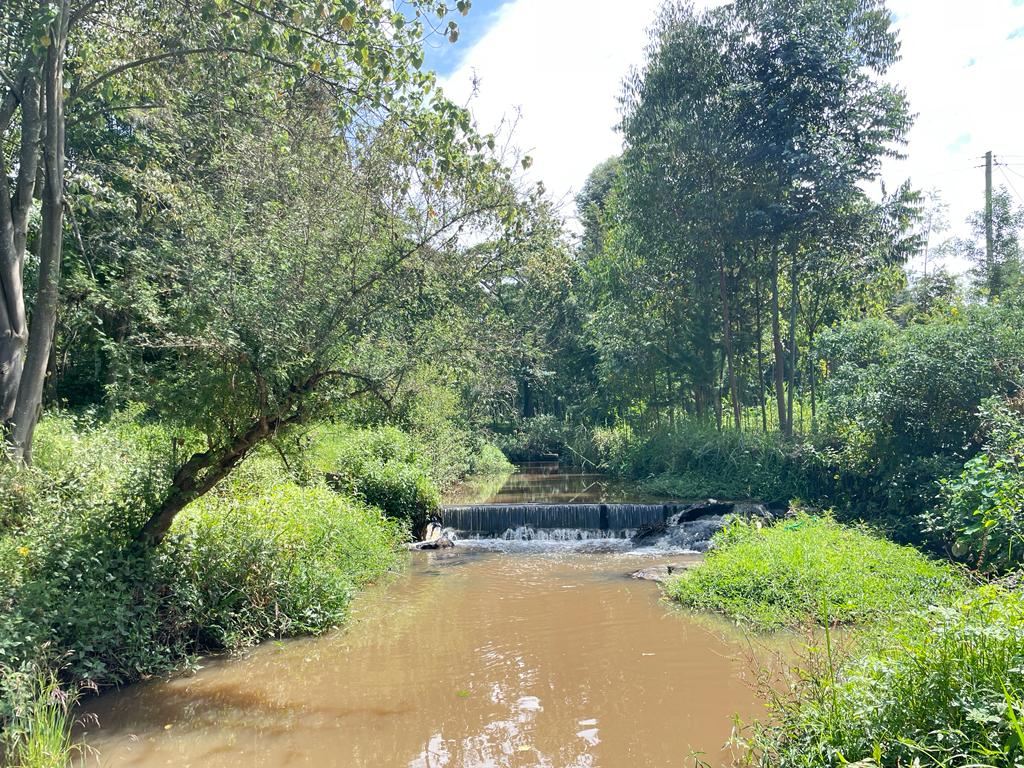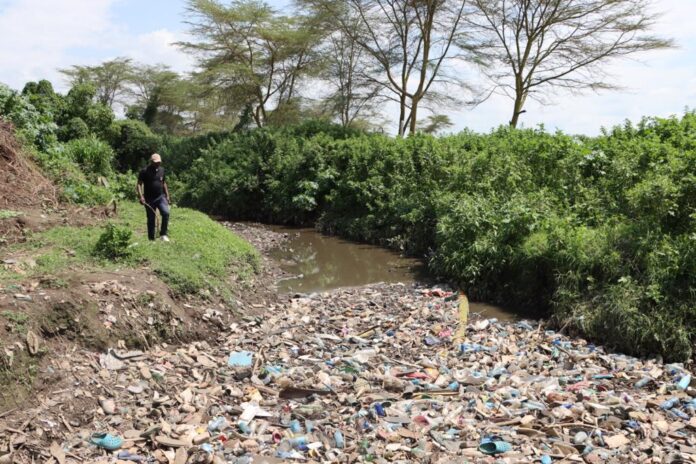By Liz Anyango
Nakuru County, Kenya: The once-thriving Njoro River, a vital tributary of Lake Nakuru, is now drying up in the heart of the Eastern Mau. The river’s health, ecological importance, and the livelihoods of hundreds of local communities that rely on it are all threatened by critical challenges.
The Njoro River is a lifeline for about 600,000 people, providing them with food and a way to make a living. However, as I began a thorough investigation, tracing the river’s path from its confluence with Lake Nakuru, I discovered a grim reality that was in stark contrast to its former glory.
Deforestation and soil erosion are evident at the source of River Njoro in Logoman Forest, located in Eastern Mau, due to poor land management practices. William Leleshwa, the Chairman of the Community Forest Association (CFA), expresses his sadness about the deterioration of the once-vast forest that was a prominent feature of their birthplace in a heartfelt account.

“I was born here, and the forest was vast, but people, unaware of the importance of forest conservation, started cutting trees too close to the riverbanks for farming, violating the prescribed distance and causing the rivers to be dry.”
He said these actions caused sediment to build up in the Njoro River, reducing both the quality and quantity of its water.
Lucy Nyambura, a long-time resident and community health volunteer, adds that the water quality of the River Njoro has been significantly degraded by pollution from a variety of sources, including industrial and domestic wastewater, agricultural runoff, and solid waste disposal.
In the Njoro chapter area, the sight of two men washing a dirty carpet by the River Njoro highlights a pressing issue. Despite the presence of a Water Resource Users Association (WRUA), a community-based organization committed to promoting sustainable water use, such challenges persist.
Kamau Muchiri, Vice Chairman of the Njoro Chapter (WRUA), highlights the core issue: limited resources hinder effective river monitoring.
“We have 100 volunteer members, so our regulations lack oversight, and rules have proven ineffective. The consequence is rampant unregulated water extraction, encroachment on riparian land, and improper waste disposal contributing to the pollution of the river, even leading to the discovery of dead animal carcasses such as dogs.”
Muchiri further expresses profound concern for the river’s aquatic life, noting the absence of fish and other organisms dependent on clean water.

There are major problems in the heart of the Njoro River’s catchment area in Ngata. A worrying sight unfolds as seen above, with women doing their laundry on the riverbank. Community Health Volunteer Lornar Chepkorir explains that water pollution is a major issue in the community.
“Insufficient water reservoirs contribute to this problem by failing to separate water for different purposes” says Lornar.
This dire situation, she says, has consequently led to an alarming rise in waterborne diseases, notably Cholera, within the area.
Pasca Kiprop, the chairperson of the Mosop Climate Change Committee, spearheads tree planting efforts in the Ngata area to combat climate change. With a target of 15 billion trees by 2023, Kiprop highlights the crucial role of local youth in achieving this ambitious goal.
“By engaging the youth in this crucial endeavor, I believe the conservation of River Njoro can be effectively preserved for future generations.”

Land mismanagement is a serious problem, and upstream soil erosion in River Njoro is a prime example. The erosion causes sedimentation, which pollutes the river’s water. Dorothy Ogolla, the agriculture officer of Nessuit Ward, is concerned that leasing shambas (farms) near the river is leading to over-ambition and misuse of the land.
As my journey came to an end at Lake Nakuru, I was confronted with a shocking sight. A disturbing scene revealed the relentless flow of plastic waste, overwhelming a formerly peaceful riverbank, and bearing witness to the severity of our environmental crisis. In the midst of this dire situation, the desecration continues with the invasion of human waste, including sewage, polluting the water and exacerbating the river’s problems. The pressing question remains: What factors led to this terrible situation?
Rotich Douglas, the Secretary of Barut Chapter WRUA, places the blame squarely on the prevalent use of plastic within town areas, among other issues.
“Some households lack proper sanitation facilities like toilets. Moreover, the absence of effective garbage collection measures has led to the dumping of waste into rivers.”
Eunice Gitui, a longtime Nakuru West resident, nostalgically remembers when the Njoro River played a vital role in the community.
“Before, when I was young, we had plenty of water here. Now we have to buy water at a high cost of 5 shillings per Litre due to the scarcity of clean water sources, which has deeply impacted the local community here.”
Meanwhile, efforts have been made by local authorities, environmental organisations, and community groups to address these challenges and restore the health of the River Njoro.

The community has taken charge of river health assessment, playing a pivotal role in monitoring the quality and quantity of water resources, in a groundbreaking endeavor driven by WWF-Kenya. A notable figure leading the charge is Phillip N’gok, the chairman of the Njoro WRUA chapter. N’gok has recently unveiled a state-of-the-art initiative that aims to combat pollution, safeguard the wellbeing of the river, and ensure the preservation of its vital ecosystem.
The community has taken charge of river health assessment, with WWF-Kenya’s support. Phillip N’gok, the chairman of the Njoro WRUA chapter, has unveiled a state-of-the-art initiative to combat pollution, safeguard the river, and preserve its ecosystem.
“In our thorough assessment, we employ multiple methods to gauge the river’s health. We monitor water temperatures, observe specific insects as cleanliness indicators, measure pH levels for acidity, and scrutinize oxygen content for its potential impact.”

Other mitigating measures include the establishment of the Logoman Forest Participatory Forest Management Plan (PFMP) in collaboration with WWF-Kenya to improve forest resource management.
The bottom line is “The only way we can manage our water is to come together and understand that we don’t have as much water. Demand is increasing so we need to come together, have that understanding and take active role in protecting our water sources and catchment areas. Climate change is real and a stark reminder that it is high time we prioritized water adaptation initiatives in all counties development plans” explained Dr. William Ojwang, WWF-Kenya Freshwater Lead.














